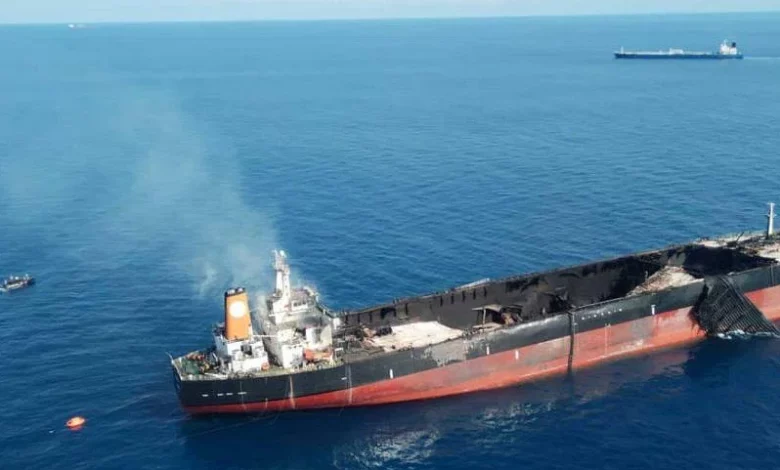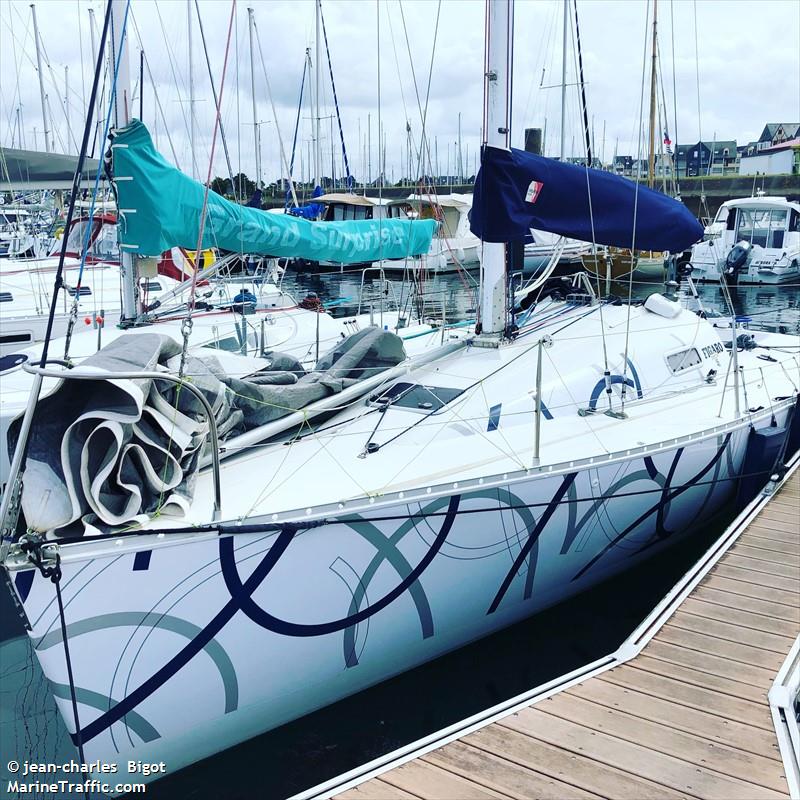
It is now 128 days since the Pablo aframax exploded in Malaysian waters, killing three crew, with the stricken tanker remaining alone, untended, with the authorities at a loss with what to do with the wreck, a warning of the hugely damaging threat posed by the growth of the so-called dark fleet.
MarineTraffic data shows the ship remains at anchor off the coast of Malaysia today.
The 1997-built Pablo, a ship which has changed hands three times in the last couple of years, issued a distress call on May 1 after a blaze was detected. Malaysian authorities were able to rescue 25 of the 28 crew.
Without any confirmed insurance, and with owners impossible to contact, the Malaysian authorities have been left in a quandary regarding what to do with the wreck. Multiple shipping databases list the ship’s insurance status as ‘Withdrawn’.
Officials from the Malaysia Maritime Enforcement Agency have yet to reply to questions sent by Splash.
According to the ship’s captain, Lepyoskin Oleksandr, a fire broke out on the upper deck. The vessel was empty of oil, but the buildup of gas was enough to blow up its entire deck. Bunker fuel subsequently washed up on nearby shorelines.
Since 2018, TankerTrackers.com evidenced this vintage ship transfer 16m barrels of Iranian oil on 29 occasions.
The exponential rise of the so-called dark fleet has been one of the big maritime trends in the 18 months since Russia invaded Ukraine with a swathe of tonnage joining the likes of ships linked to Venezuela, North Korea and Iran in being excluded from the mainstream tanker trades.
In recent months, however, the acceleration in scale of the dark fleet has slowed. The latest data from TankerTrackers.com, one of the world’s foremost observers of global tanker trades, shows there are 610 active sanction violators, made up of 116 handy tankers, 35 panamaxes, 143 aframaxes, 108 suezmaxes and 208 VLCCs.
“It seems to be holding steady here with no big surge,” said Samir Madani, the founder of TankerTrackers.com, discussing the size of the dark fleet with Splash today.
“The fleet carrying Russian cargoes is still growing, albeit at a lower rate,” commented Ioannis Papadimitriou, senior freight analyst at Vortexa, a commodities tracking platform.
Sales registers also suggest a slowing appetite for vintage tonnage. Tanker sales were slow last month. Data from VesselsValue showed tanker sales dropped 58.3% between July and August with just 10 confirmed sales.
Values weakened across the tanker sector in August, in particular the aframax and LR2 sectors where 20-year-old, 105,000 dwt vessels fell by 3.65% from $30.71m to $29.59m, according to VesselsValue.
German insurer Allianz’s annual ship casualty report, published in May, noted that vessels belonging to the dark fleet tend to be older ships, operating under flags of convenience with lower maintenance standards.
Reports indicate there were at least eight groundings, collisions or near misses involving tankers carrying sanctioned oil products in 2022 – the same number as in the previous three years, the Allianz report noted.

 aframax
aframax